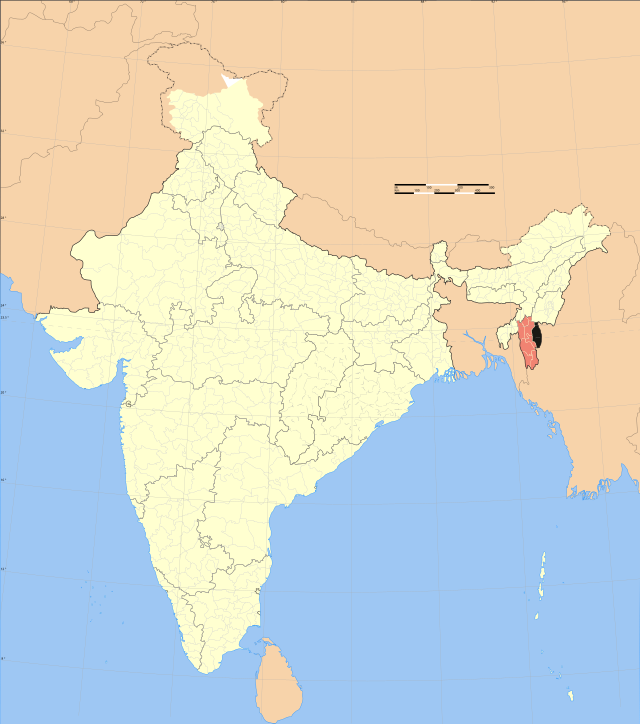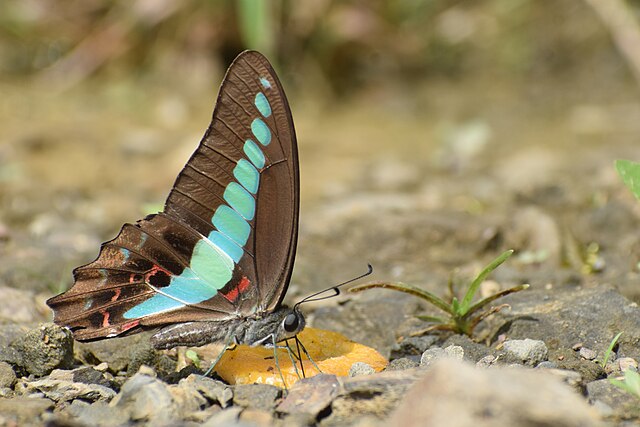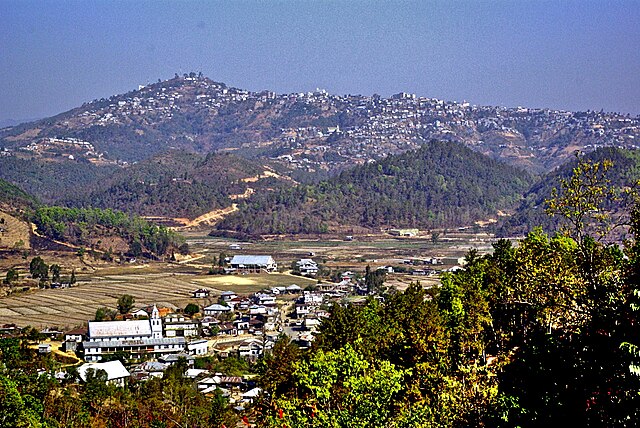Have you ever wondered about the places that remain untouched by mass tourism yet hold incredible beauty and cultural significance? Champhai, often called the “Rice Bowl of Mizoram,” is one such hidden treasure nestled in India’s northeastern frontier. This charming town, with its rolling hills, verdant valleys, and warm-hearted people, offers an authentic glimpse into Mizo culture and traditions.
Located in the easternmost part of Mizoram, Champhai serves as a gateway between India and Myanmar, making it not just geographically significant but also culturally diverse. But what exactly makes this small town so special? Let’s embark on a journey to uncover the secrets of Champhai.
What Makes Champhai Special?
Geographic Location and Significance
Champhai sits proudly at an elevation of approximately 1,678 meters above sea level, offering breathtaking panoramic views of the surrounding landscape. The town is strategically positioned along the India-Myanmar border, making it an important frontier settlement. This unique location has shaped its history, culture, and economic development over the centuries.
The district covers an area of about 3,185 square kilometers and is home to approximately 125,000 people. What’s fascinating is how this relatively small population has managed to preserve their distinct identity while adapting to modern times. Isn’t it remarkable how geography can influence an entire community’s way of life?
The Rice Bowl Legacy
Why is Champhai called the “Rice Bowl of Mizoram”? The answer lies in its fertile valleys and favorable climatic conditions that make it perfect for rice cultivation. The town produces a significant portion of Mizoram’s rice, feeding not just the local population but contributing to the state’s food security.
The terraced fields that cascade down the hillsides create a mesmerizing pattern that changes colors with the seasons. During monsoons, these fields become mirrors reflecting the sky, while harvest time paints them golden yellow. It’s like nature’s own art gallery, constantly changing its exhibition.
A Journey Through Champhai’s Rich History

Ancient Settlements and Tribal Heritage
Champhai’s history stretches back centuries, with various Mizo clans settling in the region over time. The area was originally inhabited by different tribal groups who practiced shifting cultivation and lived in harmony with nature. These early settlers laid the foundation for the agricultural practices that continue today.
The oral traditions passed down through generations tell stories of brave warriors, wise leaders, and the gradual formation of the community we see today. These stories aren’t just entertainment – they’re the threads that weave together the cultural fabric of Champhai.
Colonial Era Influence
During the British colonial period, Champhai gained importance as a frontier town. The British recognized its strategic location and established administrative systems that influenced the town’s development. However, unlike many other colonial settlements, Champhai managed to retain much of its indigenous character.
The colonial influence can still be seen in some architectural elements and administrative structures, but it’s the resilience of local culture that truly stands out. How many places can claim to have embraced change while staying true to their roots?
Exploring Champhai’s Natural Beauty
Scenic Landscapes and Valleys
The natural beauty of Champhai is nothing short of spectacular. Rolling hills covered in lush green vegetation stretch as far as the eye can see, interrupted only by meandering rivers and scattered villages. The landscape changes dramatically with the seasons, offering visitors different experiences throughout the year.
From the town center, you can see the Champhai valley spread out like a green carpet, dotted with traditional Mizo houses and modern structures. The sight of morning mist rolling over the hills is something that stays with you long after you’ve left.
Climate and Best Time to Visit
Champhai enjoys a pleasant subtropical highland climate. Summers are mild with temperatures ranging from 15°C to 30°C, while winters can get quite chilly, dropping to around 4°C to 20°C. The monsoon season brings heavy rainfall, which is crucial for the agricultural activities.
The best time to visit Champhai is during the post-monsoon months of October to March when the weather is pleasant, and the landscape is at its most beautiful. During this period, you can enjoy clear skies, comfortable temperatures, and stunning views of the surrounding hills.
Cultural Heritage and Local Traditions
Mizo Culture in Champhai
The people of Champhai are predominantly Mizo, and their culture is a beautiful blend of ancient traditions and modern influences. The community values like ‘Tlawmngaihna’ (selfless service) and ‘Hmeichhe’ (honoring women) are deeply ingrained in daily life.
Traditional Mizo houses, with their distinctive architecture and bamboo construction, can still be found throughout Champhai. These structures are not just buildings – they’re symbols of a way of life that has been passed down through generations.
Festivals and Celebrations
Chapchar Kut Festival
Chapchar Kut is one of the most important festivals celebrated in Champhai. This spring festival marks the end of the jhum (shifting cultivation) season and is celebrated with great enthusiasm. The entire community comes together to dance, sing, and feast.
During Chapchar Kut, you’ll witness traditional Mizo dances like Cheraw (bamboo dance) and Khuallam. The festival is a perfect time to experience the warmth and hospitality of the Mizo people.
Pawl Kut Harvest Festival
Pawl Kut celebrates the harvest season and is particularly significant in Champhai given its agricultural importance. The festival involves offering the first fruits to the almighty and sharing the bounty with the community. It’s a time of gratitude, celebration, and unity.
Agriculture: The Backbone of Champhai
Rice Cultivation Techniques
The rice cultivation in Champhai is a perfect example of sustainable agriculture. Farmers use traditional methods combined with modern techniques to maximize yield while preserving soil health. The terraced farming system prevents soil erosion and makes efficient use of the hilly terrain.
What’s interesting is how farmers have adapted their practices to work with the natural landscape rather than against it. This approach has made Champhai not just productive but also environmentally sustainable.
Other Agricultural Products
While rice is the primary crop, Champhai also produces various other agricultural products. Ginger, turmeric, chili, and various vegetables are grown in the region. The fertile soil and favorable climate also support fruit cultivation, including oranges, bananas, and seasonal fruits.
The diversity of agricultural products has helped the local economy remain resilient and provided farmers with multiple income sources. It’s like having multiple strings to your bow – if one fails, others can support you.
Tourist Attractions in Champhai
Rih Dil Lake
Rih Dil, located about 10 kilometers from Champhai town, is a heart-shaped lake that holds special significance in Mizo folklore. According to local beliefs, the souls of the deceased pass through this lake on their way to the afterlife. The serene beauty of the lake, surrounded by hills and forests, makes it a must-visit destination.
The lake is also significant from a geographical perspective as it lies on the India-Myanmar border. Visitors can enjoy boating, fishing, and simply soaking in the peaceful atmosphere.
Thasiama Seno Neihna
This historical site is associated with Thasiama, a legendary Mizo hero. The location offers spectacular views of the surrounding landscape and provides insight into Mizo history and legends. It’s a place where history and natural beauty converge.
Fiara Tui
Fiara Tui is a beautiful waterfall located near Champhai. The cascading water creates a perfect spot for picnics and relaxation. During the monsoon season, the waterfall is at its most magnificent, creating a thunderous roar that can be heard from a distance.
Getting to Champhai: Transportation Guide
By Road
The most common way to reach Champhai is by road. The town is well-connected to Aizawl, the capital of Mizoram, by a good network of roads. The journey from Aizawl to Champhai takes about 6-7 hours and offers stunning views of the Mizoram countryside.
Regular bus services operate between major towns in Mizoram and Champhai. For a more comfortable journey, you can hire private taxis or drive your own vehicle.
By Air
The nearest airport to Champhai is Lengpui Airport in Aizawl, which is about 185 kilometers away. From the airport, you’ll need to travel by road to reach Champhai. Several domestic airlines operate flights to Lengpui Airport from major Indian cities.
Accommodation and Local Amenities

Champhai offers various accommodation options ranging from government guest houses to private hotels and homestays. While you won’t find luxury resorts here, the available accommodations are clean, comfortable, and offer warm hospitality.
Staying in a local homestay is highly recommended as it provides an authentic experience of Mizo culture and lifestyle. The hosts are usually eager to share stories about their town and culture, making your stay memorable.
Local Cuisine and Food Culture
The cuisine of Champhai reflects the broader Mizo food culture with some local variations. Rice is the staple food, often accompanied by various meat and vegetable dishes. Bamboo shoot curry, dried fish preparations, and locally grown vegetables are common ingredients.
One unique aspect of Champhai’s food culture is the use of locally grown spices and herbs. The food is generally mild but flavorful, with an emphasis on fresh ingredients. Don’t miss trying the local rice wine, which is an integral part of Mizo culture.
Challenges and Future Prospects
Like many border towns in India’s northeast, Champhai faces various challenges including limited infrastructure, connectivity issues, and economic opportunities. However, the town has immense potential for sustainable tourism and agricultural development.
Recent government initiatives focused on border area development and tourism promotion are bringing positive changes. The challenge is to develop these opportunities while preserving the unique cultural and environmental heritage of the region.
Conclusion
Champhai stands as a testament to the beauty of simplicity and the strength of community bonds. This “Rice Bowl of Mizoram” offers visitors much more than just scenic beauty – it provides an opportunity to witness a way of life that values harmony with nature and community above individual gain.
Whether you’re drawn by its natural beauty, fascinated by its culture, or simply seeking a peaceful retreat from urban chaos, Champhai has something to offer. As tourism in Northeast India continues to grow, places like Champhai remind us that the best travel experiences often come from the most unexpected places.
The town’s ability to maintain its identity while slowly embracing modernity offers hope for sustainable development in remote areas. Champhai isn’t just a destination – it’s a lesson in living harmoniously with nature and community.
Frequently Asked Questions (FAQs)
1. What is the best time to visit Champhai?
The best time to visit Champhai is from October to March when the weather is pleasant and dry. This period offers clear skies, comfortable temperatures, and beautiful views of the surrounding landscape.
2. How far is Champhai from Aizawl?
Champhai is approximately 185 kilometers from Aizawl, the capital of Mizoram. The journey by road takes about 6-7 hours, depending on road conditions and stops along the way.
3. Do I need special permits to visit Champhai?
Indian citizens do not require special permits to visit Champhai. However, foreign nationals need to obtain an Inner Line Permit (ILP) to enter Mizoram, which can be obtained from Mizoram government offices in major Indian cities.
4. What are the main attractions in Champhai?
The main attractions in Champhai include Rih Dil Lake, Thasiama Seno Neihna historical site, Fiara Tui waterfall, and the beautiful rice terraces. The town itself offers insights into authentic Mizo culture and traditions.
5. Is Champhai safe for tourists?
Yes, Champhai is generally safe for tourists. The local people are hospitable and welcoming to visitors. However, as with any travel, it’s advisable to take standard precautions and respect local customs and traditions.

